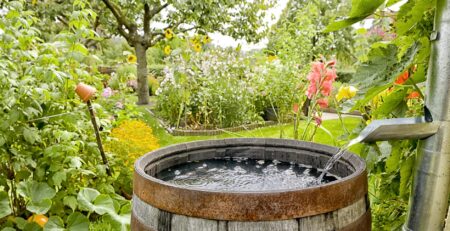Cankers on Italian Cypress
Q: My Italian cypress has lots of dead branches. What’s wrong?
A: The dead branches are a symptom of Seiridium canker, a disease which can infect Italian cypress.
Distinctive and lovely, columns of Italian cypress can add a touch of the Mediterranean to North Texas landscapes. Planted in full sun in fertile, moist, and well-drained soil, the trees can be enjoyed for many years. Recently, however, infection by Seiridium canker has been devastating to Italian cypress, as well as juniper and arborvitae.
Infection
Seiridium canker is a fungal disease that infects the inner bark of trees, causing dead lesions or cankers on the branches and trunk. The disease is spread by fungal spores dispersed in wet, rainy, or windy weather. The pathogen enters the tree via a wound caused by environmental factors (freeze, wind, or hail damage), mechanical issues (mower or weed-eater cuts), or borer insects.
Botryosphaeria (bot) canker is another fungus that can infect Italian cypress as well as eastern red cedar and other junipers. Dieback symptoms caused by bot canker closely resemble Seiridium canker. Sometimes looking at diseased tissue under a microscope is the only way to distinguish between the two cankers. Environmental stressors like tree wounds can leave trees more vulnerable to bot canker but, unlike Seiridium canker, bot canker can also infect healthy trees.
Texas A&M AgriLife Extension offers more information about diseases of Italian cypress and related species in a publication you can download for free online.
Symptoms to Look For
Isolated dead branches or flags are usually the first symptom of the disease. As the canker progresses, more dead branches develop throughout the tree. Sunken, dead lesions can appear on the trunk and branches, and sometimes gummy, black ooze will leak from the injured bark. Eventually the cankers spread from the branches to the trunk, girdling and killing the upper parts of the tree, and leading to the death of the tree in three to five years.
Treatment
If a tree is infected with Seiridium canker, it is essential to prune out as much of the diseased growth as possible to prevent spread of the pathogen. Prune during dry weather and destroy or discard all pruned branches. Clean pruning tools with a 10% bleach solution between cuts on a tree or when pruning different trees. No chemical control is available for treating Seridium or bot canker.
Plant Selection and Care
Trees that are already stressed by other factors are often unable to resist canker infection. Italian cypress trees, for example, grow best in well-drained soils. Planting them in Dallas’ clay soils with poor drainage can stress them and pre-dispose them to disease. Providing basic care with proper watering, feeding, mulching, and pruning will help keep Italian cypress trees healthy and disease resistant. If they do get diseased, replace them with native or well-adapted trees. The Texas A&M Forest Service offers a Texas Tree Planting Guide that recommends the best trees to plant in Dallas county or any other Texas county.












